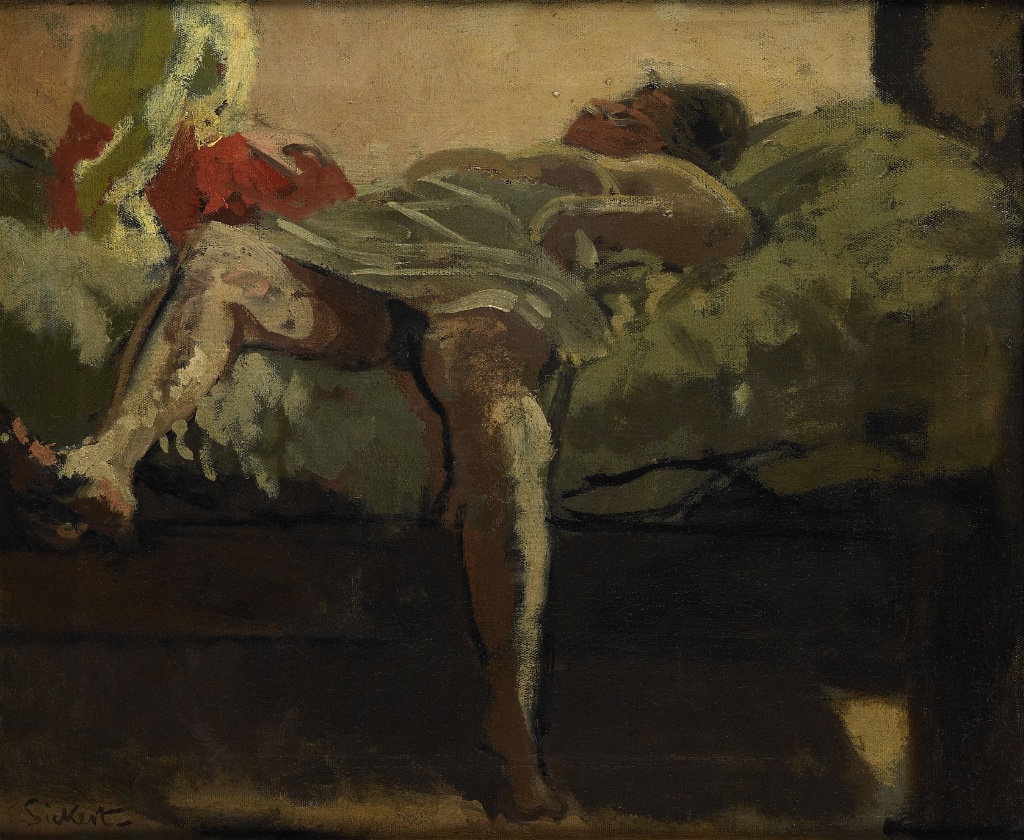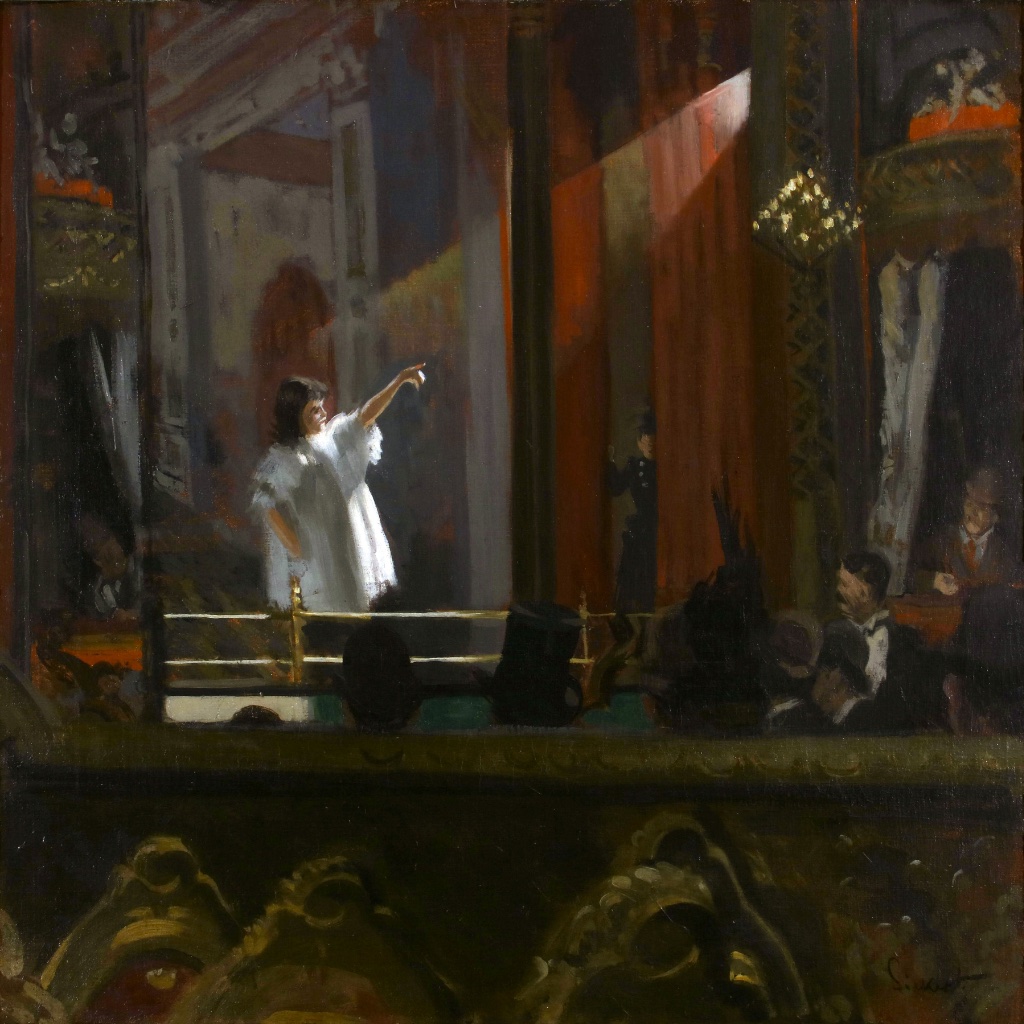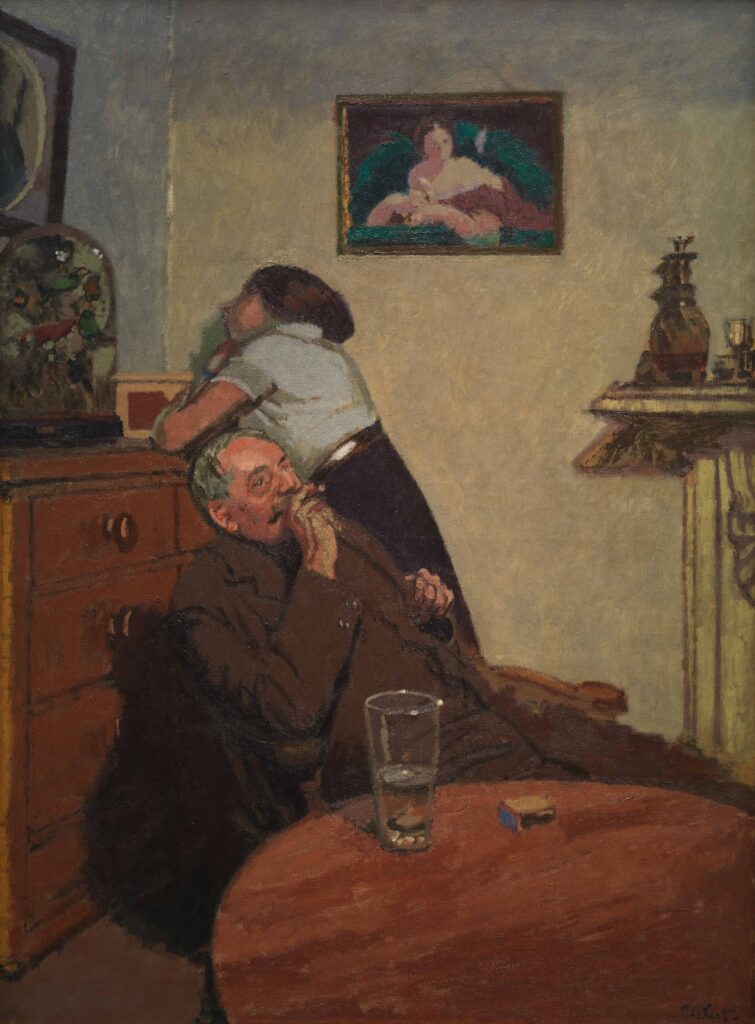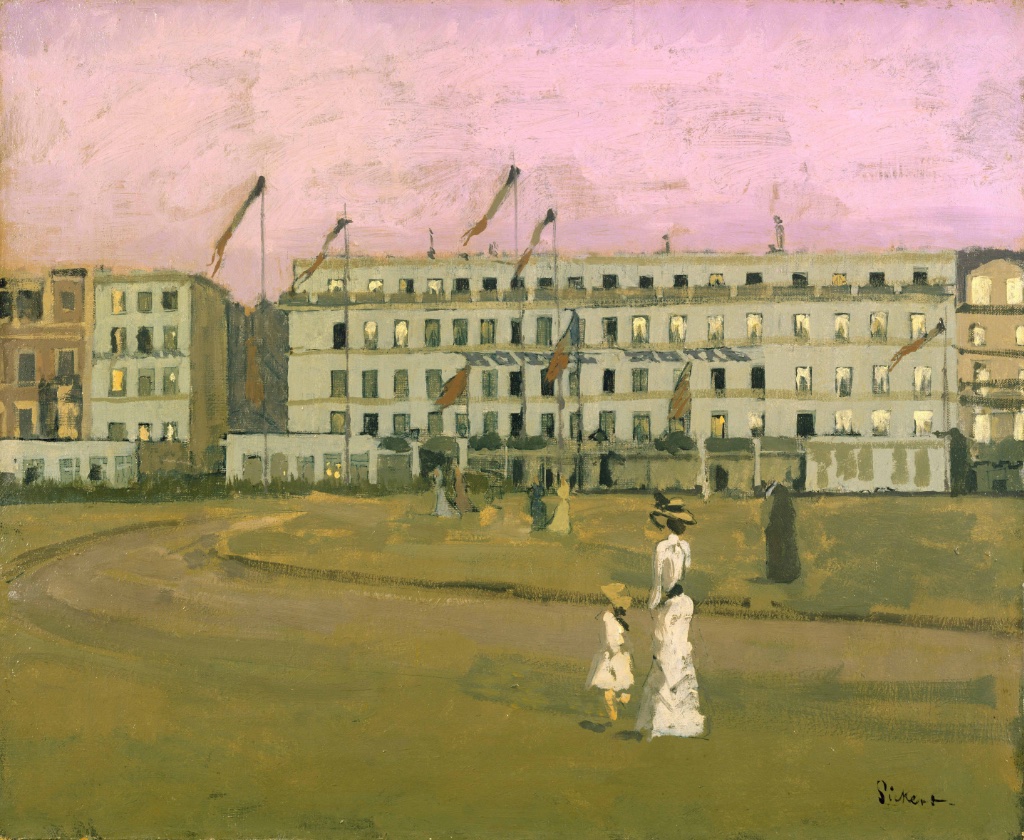
Walter Richard Sickert (1860-1942), the subject of a retrospective at Paris’s Petit Palais, “Walter Sickert: Peindre et Transgresser,” was described by Delphine Lévy, the late French Sickert expert, as “provocative and enigmatic,” haughty and defensive even with long-time friends like the French painter Jacques-Émile Blanche, who himself described Sickert as a “chameleon” who constantly changed his appearance, painting techniques and even his opinions.
Sickert, who was born in Germany but lived most of his life in Britain, interrupted by stays in France and Venice, also had a reputation as a kind of pervert (he had a great last name for it), stemming from his frequent visits to prostitutes and his paintings of them, as well as his fascination with the theater, considered dens of inequity at the time. In the 1970s, he was even retrospectively considered by some to be Jack the Ripper (the vicious 19th-century murderer of prostitutes in London whose identity was never discovered). The theory was supported by the fact that Sickert not only lived in Camden Town, where another such murder occurred, but also once rented a room that the Ripper had supposedly lived in.
It didn’t help that he changed the name of several of his existing paintings from, for example, “What Shall We Do for the Rent?” to “The Camden Town Murder.” and “L’Affaire Camden.” Each one features a fully clothed man and a supine naked woman in a small, dark bedroom. The man who caused so much outrage with his paintings seems to have been not only unafraid of scandal but to seek it out. The Sickert as Ripper theory, however, has now been largely discredited and is not even mentioned in the exhibition.
The show opens with a series of self-portraits made at different periods of his life that amply illustrate his protean personality, then goes on to show how the influence of Sickert’s first master, Whistler, with his rapid sketching techniques of scenes from life and subtle color harmonies, was gradually replaced by that of his friend and mentor Degas, who advocated making preliminary drawings and painting in the studio.

Sickert’s theater scenes, like those of Degas, zoom in on details, framing the images from odd angles and often focusing on the audience rather than the stage. In his music-hall scene “Little Dot Hetherington at the Old Bedford Hall” (c. 1888-89, for example, we see the gesturing, brightly lit star of the show and the stage itself reflected in a mirror, with the backs of theater seats looming large in the foreground.

A section on what were once called “conversation pieces,” genre scenes showing people in interiors, often depict depressing, even sordid, situations, many of them of naked women sprawled on beds. Virginia Woolf, a fan of Sickert’s work, wrote of another of these conversation pieces, “Ennui” (c. 1914), “The grimness of that situation lies in the fact that there is no crisis; dull minutes are mounting, old matches are accumulating and dirty glasses and dead cigars.”
Toward the end of his long career, Sickert began to transpose photographs and press illustrations onto canvas, enlarging the image, and to rely on studio assistants to do much of the work, practices that were violently criticized at the time, but that have become common among many of today’s contemporary artists, contributing to his reputation as their forerunner. His use of heavy impasto (which he claimed to despise) on flesh is often compared to Lucien Freud’s, while the appropriation of others’ works and use of studio assistants calls to mind many of today’s artists, including Richard Prince and Jeff Koons.

The dark muddiness and gloom of so many of Sickert’s paintings can be off-putting – after Whistler’s influence waned, he only rarely lightened his palette in his paintings, mostly in outdoor scenes – but it is nonetheless interesting to watch the zigzagging course of the career of this eccentric, always provocative artist over the years.
See our list of Current & Upcoming Exhibitions to find out what else is happening in the Paris art world.
Favorite
Frankly one of the most depressing exhibits I have paid to see in quite a while. You are so right about the muddy paintings. This is a large collection of mediocre work. I got so tired of the prostitutes and garish music halls. Only the Whistlers made it worthwhile. Sickert is a very minor artist in my book.
Osbert Sitwell edited and published a book of Sickert’s writings, A Free House, in the 1940s about the same time as Osbert’s then-celebrated five volumes of memoirs (one volume includes a chapter about Sickert). Denys Sutton, who taught so much I know about the fine arts and much else in his twenty-five years of Apollo and was a disciple of the Sitwells also wrote about Sickert. The connection with the likes of Koons or even Freud or Bacon seems less of a recommendation. Putting aside the rumour about the Ripper, there may have been something disturbing about Sickert. The Englishwoman who had a second-hand bookshop in the rue Blomet, in the 15th arrondissiment in the early 1990s with her French husband, she in her upper seventies, he in his nineties, said that when she was a little girl in Dieppe, Sickert used to pick her up and toss her up in the air. The memory made her take Patricia Cornwell’s scandal about Sickert had face value. The exhibition may not mention it but the rumour is in the catalogue and the French translation of the Cornwell book is in the Petit Palais’s shop.
I should have said that Denys Sutton was Apollo’s editor for twenty-five years (1962-1987), and much I know about the fine arts I learned from the magazine when he was there, tho’ my father was an aesthete, which had an influence too. It was a remarkable period for that Sutton was close to the Sitwells, Kenneth Clark and Harold Acton.